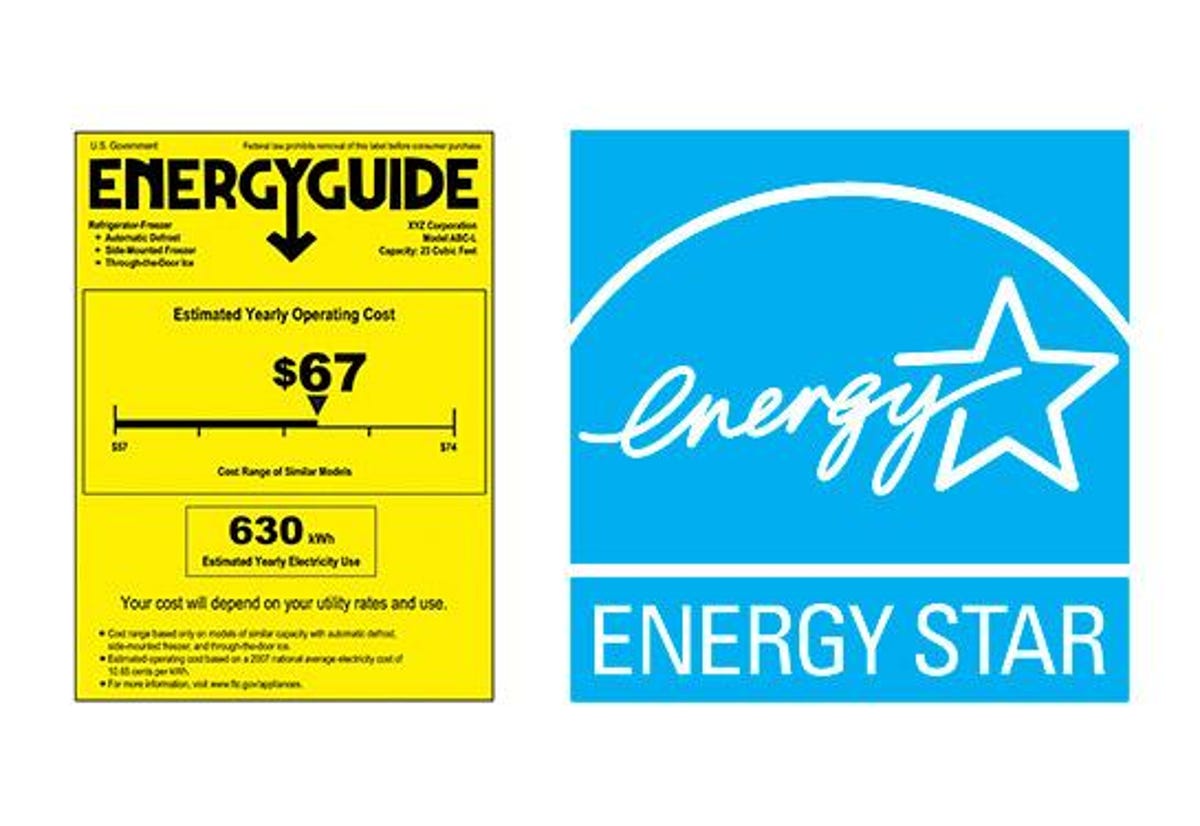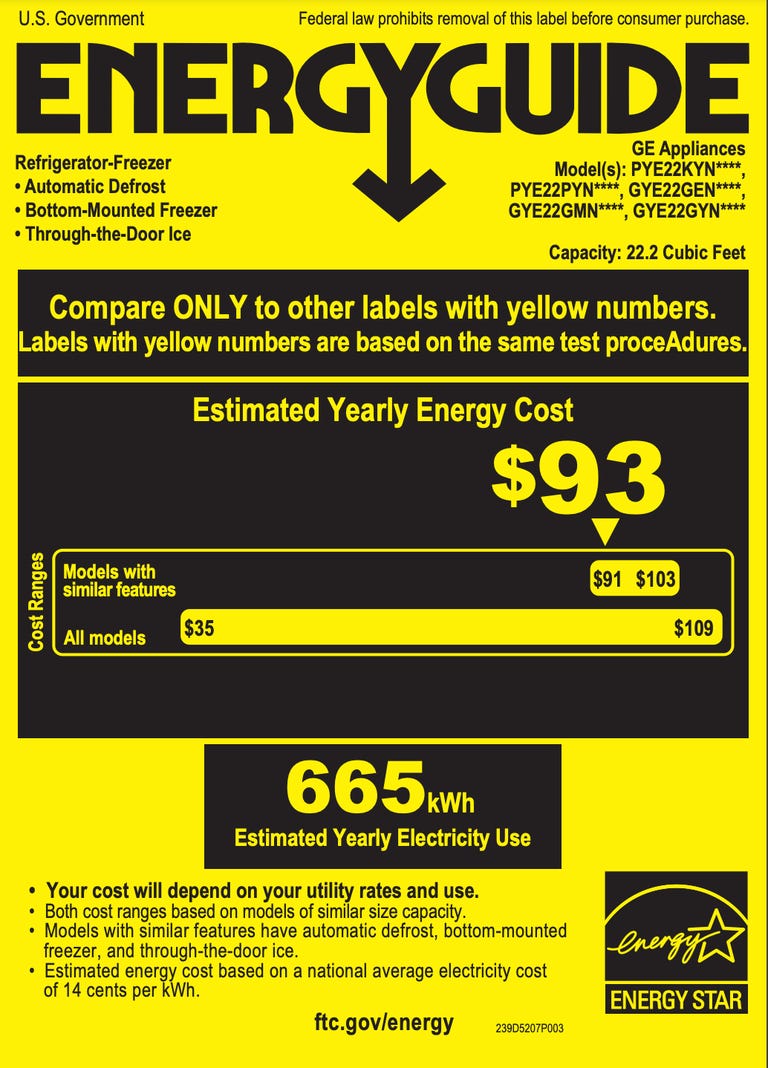One of the easiest ways to lower your costs for heating, cooling and electricity is to simply use less energy. Quick hacks like setting your thermostat to the right temperature, unplugging vampire appliances and turning off your lights can make a significant impact on your utility bills.
Another effective way to save money on utilities is by improving your home’s energy efficiency. Caulk and weatherstrip your doors and windows to save on heating and cooling. Use smart power strips that optimize electricity. Get a home energy audit (good for up to $150 in tax credit) to see where you can improve efficiency.
You can also save energy by switching to energy-efficient appliances. The Energy Star logo is an easy way to spot products that can save you considerable energy and money in the long run.
You’re probably familiar with the Energy Star logo, with its white star and blue background. But what does the certification actually mean? Though the requirements for Energy Star certification vary between product categories like refrigerators, TVs, dishwashers and light bulbs, the program does have some standards that apply to all the appliances it certifies.
Read on to learn more about the Energy Star label, its meaning, and how it can save you money. For more energy-savings tips, try this ceiling fan hack or learn why you might move your smart thermostat to an better location.
What is Energy Star?
Energy Star is a government-backed program for identifying products and appliances that meet certain energy efficiency standards. It was established in 1992 by the US Environmental Protection Agency as a way to promote products designed to use less energy and reduce recurring costs for consumers.

The Energy Star label shows how much energy an appliance consumes and how it compares to conventional alternatives.
How do products receive the Energy Star certification?
The EPA and Department of Energy decide which products will receive the Energy Star logo. The agencies grade products in more than 60 different appliance categories, with standards varying depending on the specific category.
As a general rule, the EPA uses these guiding principles to determine which products get the Energy Star label:
- Products must be in categories that can significantly contribute to energy savings.
- Products must have additional features that customers want, along with energy efficiency.
- If a product costs more than a conventional equivalent, it must provide enough energy cost savings to recover the price difference in a reasonable time.
- Products must allow measurable and verifiable testing to confirm energy use and performance.
- Products can provide energy efficiency through common technology. There’s no need for proprietary solutions.
- Products must be able to display the Energy Star label so that consumers can make an informed decision.
Energy Star certifications are made differently for each appliance category. For instance, refrigerators must be at least 15% more efficient than the federal standard. TVs can only use 3 watts or less when turned off (about 50% less than average). Energy Star light bulbs must use at least 66% less energy than a conventional light bulb.
What types of appliances are eligible to receive an Energy Star rating?
The EPA and Department of Energy have selected 62 categories of products that are eligible to be certified. Some of those categories include appliances like washers, dryers, air conditioners and refrigerators. Computer monitors and televisions also get graded, as do ceiling fans and pool pumps.
A full list of products eligible for certification is available on the Energy Star website.
Are there different levels of Energy Star ratings?
Energy Star does not explicitly recognize different levels of energy efficiency in its certifications. It awards its logo to any product that meets its minimum qualifications. However, it does keep a list of the most efficient products in each appliance category.
Products that earn this achievement receive an Energy Star label that specifies the product is considered the most efficient in its category for a given year. A full list of Energy Star’s Most Efficient products can be found on the Energy Star website.
Energy Star also issues scores for commercial buildings, ranging from 1 to 100. These scores are based on comparisons to other buildings with similar uses that have been graded on energy efficiency. But consumer products either qualify or don’t.

The FTC requires products with Energy Star certification to display an energy comparison label.
If you’re looking for a way to determine the energy efficiency of a particular Energy Star product, check its EnergyGuide label. This label, required by the US Federal Trade Commission, tells consumers how much energy a product consumes and how it compares to other products in its category. This label typically appears in yellow on a physical product or on the company’s official product page online.
Can Energy Star appliances save you money?
Yes, there are a few different ways that Energy Star products can save you money. The first and most obvious is via improved energy efficiency. Products that are more energy efficient can save you money over the long run because they should lower your energy bill. The Energy Star certification is given to products that save consumers money compared to less efficient alternatives by cutting down on energy costs.
It is worth noting that the impact of an Energy Star product will vary depending on your overall usage. Additionally, suppliers in some regions charge more for energy consumed during peak hours. If your utility company operates on a time-of-use system, you may end up paying more for using your appliances at times when energy demand is higher. Energy Star products will still operate more efficiently and consume less energy, but the savings may not be as much as you expect.
Here Are 23 Ways to Save On Your Electric Bills Right Now
The other way Energy Star products can save you money is through tax breaks. Cities, states and the federal government all run incentive programs to encourage consumers to purchase energy-efficient products. These incentives make it more affordable to buy products that are energy efficient, even if they might cost more up front than less efficient options.
For example, the federal energy-efficiency home improvement credit offers up to $1,200 back annually for purchases of Energy Star appliances. The credit will give you 30% of your purchase price back at tax time, with maximum limits on certain appliances, like furnaces, air conditioners, water heaters and electrical panels.
In addition to $1,200 annually for Energy Star appliances, the tax credit also provides up to $2,000 annually for heat pumps, heat pump water heaters, biomass stoves and biomass boilers, bringing your maximum tax time return to a whopping $3,200.
For more energy- and money-saving tips, check out how to lower your air-conditioning bill when you’re on vacation or learn how much energy a microwave uses compares to a conventional oven.




















+ There are no comments
Add yours